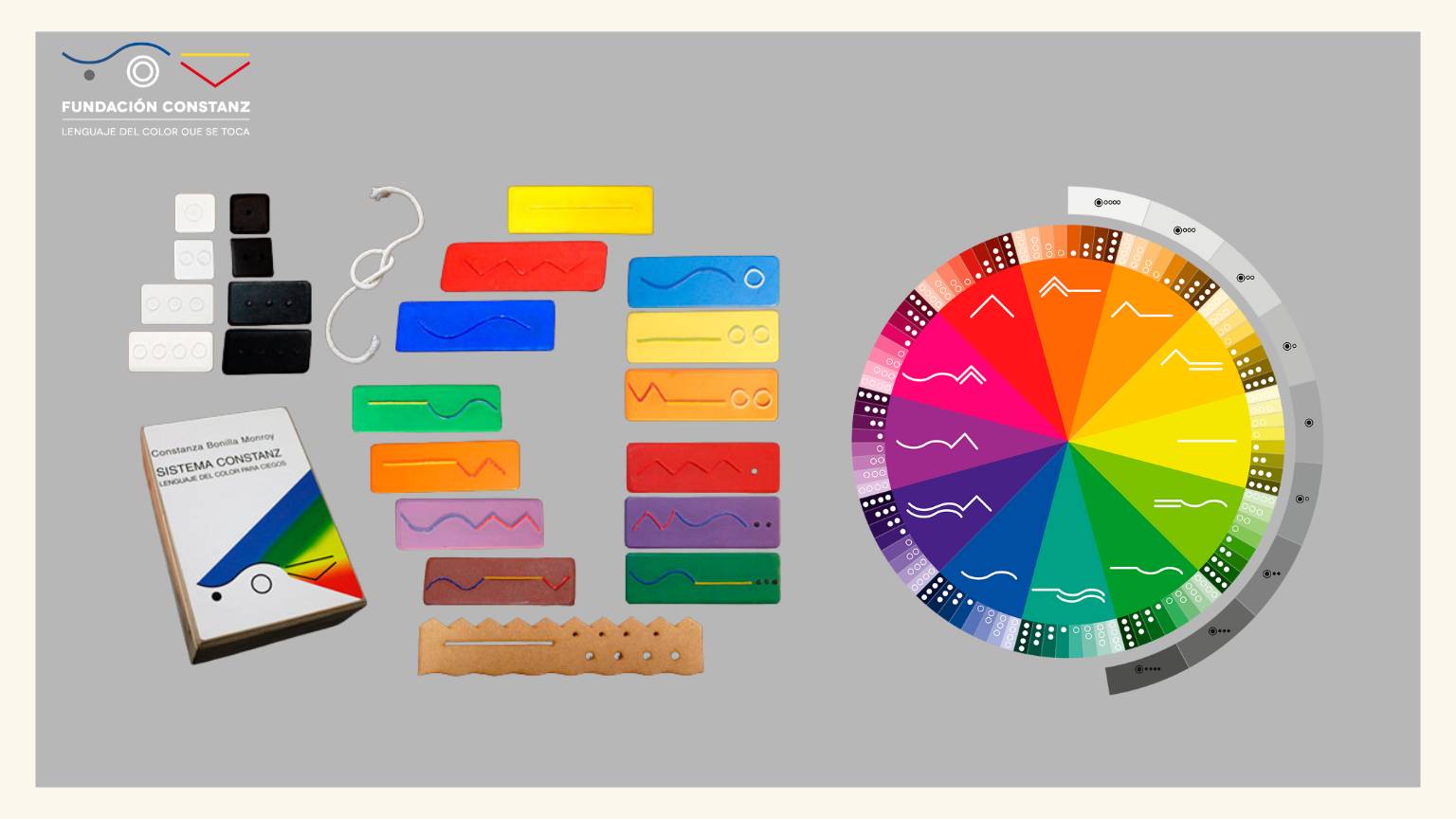18. Applications & Implications
Background
My project comprises didactic and playful material designed to facilitate the acquisition of knowledge about the basic colors and the combinations that can be formed between them. Each color will be represented by a geometric figure. In order to facilitate the identification of colors through touch, these figures will be created from silicone molds. To facilitate the identification of colors, a base will be constructed where each figure can be placed. When the figures are placed, the base of the corresponding color will be illuminated. This will be accomplished through the use of a tactile sensor.
What will it do?
It will detect when a figure is placed on the base to turn on the corresponding Neopixels by means of a touch sensor.
Who's done what beforehand?
Constanz System

Source: Sistema Constanz (n.d.)
Didactic material is in the form of a language of touching color, which has its origin in the codification of primary colors. Its structure in codes comes from the relationship between the movement, form, and color of three natural elements: the waves of the sea, fire, and the sun's rays.
Ivy

Source: ivy (2020)
A sensorial routine planning tool that allows kids on the autism spectrum to plan their day by creating a ‘melody of the day’. This melody is built from different textured and colored pebbles that each has a unique sound.
Feelipa code

Source: Feelipa Code (n.d.)
A very simple, easy to memorize and universal color code, by being associated with globally recognized geometric shapes. By presenting itself in relief, it is easy for anyone to correctly identify colors.
What will you design?

- Textures. To offer children a sensory experience, I will create three different textures for each geometric form, with a relationship based on the associated color.
- Sensor. I'll create the tactile sensor since I want it to have a transparent base that reflects the light from the Neopixels onto each figure. That is why I will design my own sensors.
- PCBs. I'll create one PCB per figure to better distribute light based on the geometric form.
What materials and components will be used?
Components:
- 3 ATTiny 45.
- 44 Capacitors.
- 4 LEDs.
- 6 Resistances .
- 1 ESP32-C3
- 14 Neopixels.
- Cables Dupont.
- Acrilic
- MDF
- Epoxic Resine
Where will come from?
From local stores (QuimicPlasctic, Impresoras SD Puebla, Home Depot) or online (Amazon, Adafruit, SparkFun, DigiKey).
Note: Some materials could be obtained from material discarded by students inside the university.
How much will they cost?
| Amout | Component | Price |
|---|---|---|
| 3 | ATTiny 45 | 5.97 |
| 4 | LEDs | 0.60 |
| 10 | Resistors | 0.18 |
| 14 | Neopixels | 8.40 |
| 1 | Seeed Studio XIAO ESP32C3. | 9.90 |
| 57 | Pines | 12.60 |
| 1 | Resine | 43.82 |
| 1 | Acrilic | 5.90 |
| 2 | Copper Sheet | 2.16 |
| 1 | Wax | 20.82 |
| 1 | Silicon | 35.84 |
| 1 | MDF | 7.84 |
| 154.04 | ||
What parts and systems will be made?
- PCBs.
- Shapes.
- Case.
- Supports of PCBs.
- Interface.
What processes will be used?

What questions need to be answered?
- How will I program the color combinations?
- Which library will I use for the touch sensor?
- How will I guarantee the contact of the figures with the base?
- What elements will I use to generate the contact of the figures with the base?
- How will I communicate with each of the PCBs?
- What safety measures should I follow to guarantee its use with children?
How will it be evaluated?
- Accuracy test of the sensor.
- Test of communication between boards.
- Interface test.
- Usability tests with users.
Project Plan

You can see more of my project by clicking here:
